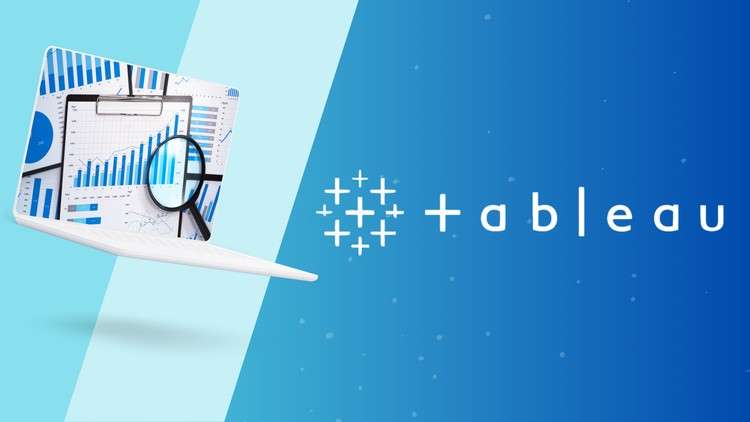
Master Data Visualization essentials and advance your data analysis skills with the Tableau Crash Course for Beginners
What you will learn
Install Tableau Desktop (Public) Application
Familiarize yourself with the Tableau Desktop interface
Create different types of visualizations
Create geospatial visualizations using Tableau
Learn more about Mark Cards & Relationship in Tableau
Build Your Own Data Visualization Dashboard using Airbnb Listing Data
Publish your Dashboard on Tableau Public
Why take this course?
Data Visualization in Tableau – Crash Course
Unlock the power of data visualization with our mini course on Tableau, a leading platform for turning raw data into actionable insights. Designed by our expert instructor Asad Raza Nayani, this course is perfect for beginners looking to master the essentials of Tableau and advance their data analysis skills.
Why Choose Tableau?
Tableau is renowned for its user-friendly interface, rapid insights, and seamless integration capabilities. It offers unparalleled customization and interactivity, allowing users to tailor their visualizations to specific needs. Tableau’s scalability and robust performance make it a top choice for professionals across industries. Additionally, a vibrant community and extensive support resources ensure that you’re never alone on your learning journey.
Course Outline
- Introduction to Tableau
- Get started with the basics of Tableau, including how to navigate the user interface and connect to various data sources.
- Creating Basic Graphs
- Learn to create simple charts and graphs, introducing you to Tableau’s powerful visualization tools.
- Geospatial Data Integration
- Connect and combine data from geospatial tables and review tables, learning the concept of data relationships.
- Using Unions for Data Consolidation
- Understand how to use unions to merge data from multiple tables, especially useful for combining quarterly data sets.
- Exploring Line Graphs
- Create views like “Top Hosts by Bookings” and “Listings,” enhancing your ability to present data trends over time.
- Calculated Fields and String Functions
- Delve into advanced calculations by using string functions to parse and aggregate data, such as calculating the total amenities of a listing from raw JSON data.
- Creating Histograms and Filters
- Learn to create histograms to visualize data distribution and use filters to control data displayed across sheets.
- Building Interactive Dashboards
- Combine all your sheets into a cohesive dashboard, and add interactive elements to make your data presentations engaging and informative.
- Publishing Your Dashboard
- Finally, publish your dashboard to Tableau Public, sharing your insights with a broader audience.
Why This Course?
This mini course not only teaches you the technical skills required to use Tableau but also emphasizes practical application through project-based learning. By the end of this course, you will have a solid foundation in data visualization, ready to tackle more complex projects and enhance your career in data analytics.
Join us and start transforming data into insights today!
About the Instructor:
Asad Raza Nayani is a Senior Data Analyst with over 3 years of experience in the field. He has a strong background as a Software Engineer, having worked at notable companies like Citi and Revature. Asad is proficient in a variety of technologies, including ETL, Java, API Development, Spring Boot, Apache Spark, Angular, and Oracle Database.
Currently, Asad is a Data Analyst and Senior Fraud Strategy Consultant at Citizens. In this role, he utilizes tools such as Tableau, Oracle Database, Pandas, Alteryx, and Python to analyze data and develop strategies to combat fraud.
At Job Ready Programmer, Asad is passionate about teaching and mentoring students. He focuses on imparting knowledge in the latest technologies, including Tableau, to help students stay current with industry trends and enhance their skills in data analysis and visualization.